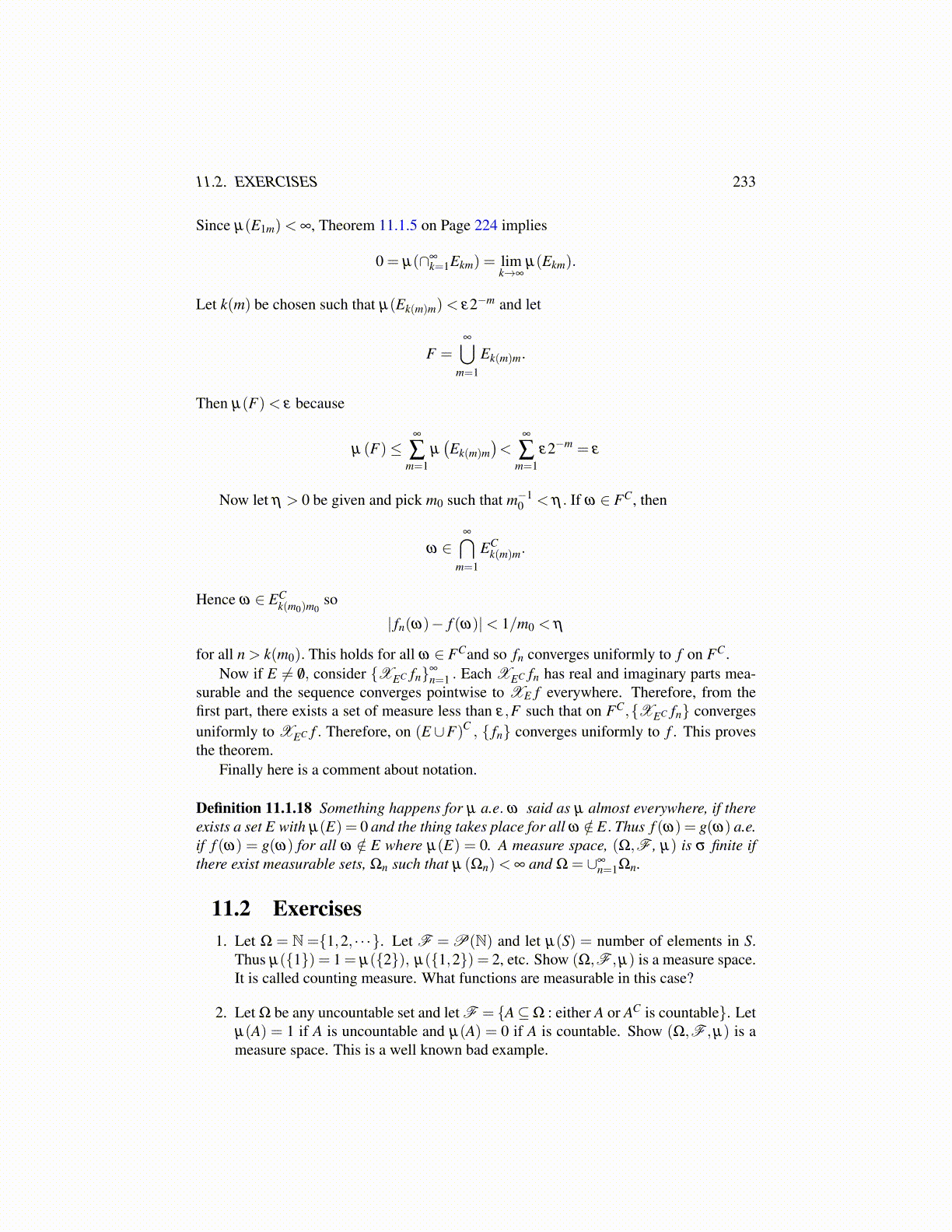
11.2. EXERCISES 233
Since µ(E1m)< ∞, Theorem 11.1.5 on Page 224 implies
0 = µ(∩∞k=1Ekm) = lim
k→∞µ(Ekm).
Let k(m) be chosen such that µ(Ek(m)m)< ε2−m and let
F =∞⋃
m=1
Ek(m)m.
Then µ(F)< ε because
µ (F)≤∞
∑m=1
µ(Ek(m)m
)<
∞
∑m=1
ε2−m = ε
Now let η > 0 be given and pick m0 such that m−10 < η . If ω ∈ FC, then
ω ∈∞⋂
m=1
ECk(m)m.
Hence ω ∈ ECk(m0)m0
so
| fn(ω)− f (ω)|< 1/m0 < η
for all n > k(m0). This holds for all ω ∈ FCand so fn converges uniformly to f on FC.
Now if E ̸= /0, consider {XEC fn}∞
n=1 . Each XEC fn has real and imaginary parts mea-surable and the sequence converges pointwise to XE f everywhere. Therefore, from thefirst part, there exists a set of measure less than ε,F such that on FC,{XEC fn} convergesuniformly to XEC f . Therefore, on (E ∪F)C , { fn} converges uniformly to f . This provesthe theorem.
Finally here is a comment about notation.
Definition 11.1.18 Something happens for µ a.e. ω said as µ almost everywhere, if thereexists a set E with µ(E) = 0 and the thing takes place for all ω /∈ E. Thus f (ω) = g(ω) a.e.if f (ω) = g(ω) for all ω /∈ E where µ(E) = 0. A measure space, (Ω,F , µ) is σ finite ifthere exist measurable sets, Ωn such that µ (Ωn)< ∞ and Ω = ∪∞
n=1Ωn.
11.2 Exercises1. Let Ω = N={1,2, · · ·}. Let F = P(N) and let µ(S) = number of elements in S.
Thus µ({1}) = 1 = µ({2}), µ({1,2}) = 2, etc. Show (Ω,F ,µ) is a measure space.It is called counting measure. What functions are measurable in this case?
2. Let Ω be any uncountable set and let F = {A⊆Ω : either A or AC is countable}. Letµ(A) = 1 if A is uncountable and µ(A) = 0 if A is countable. Show (Ω,F ,µ) is ameasure space. This is a well known bad example.